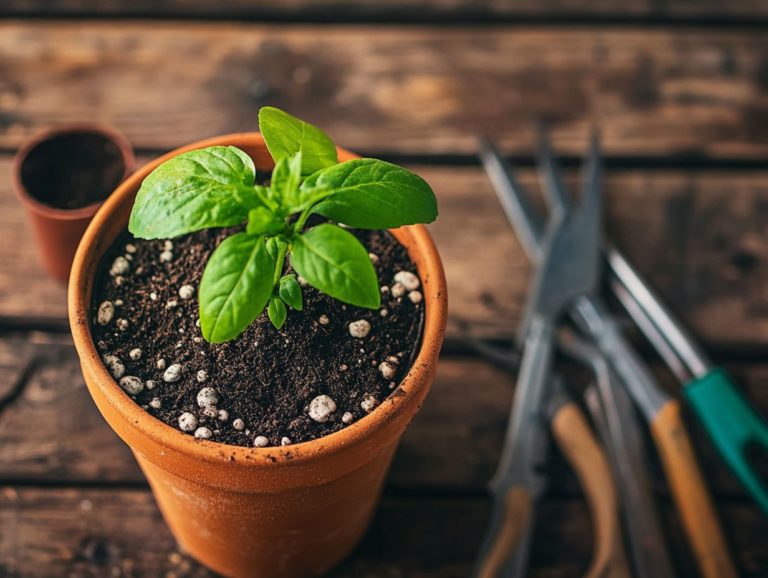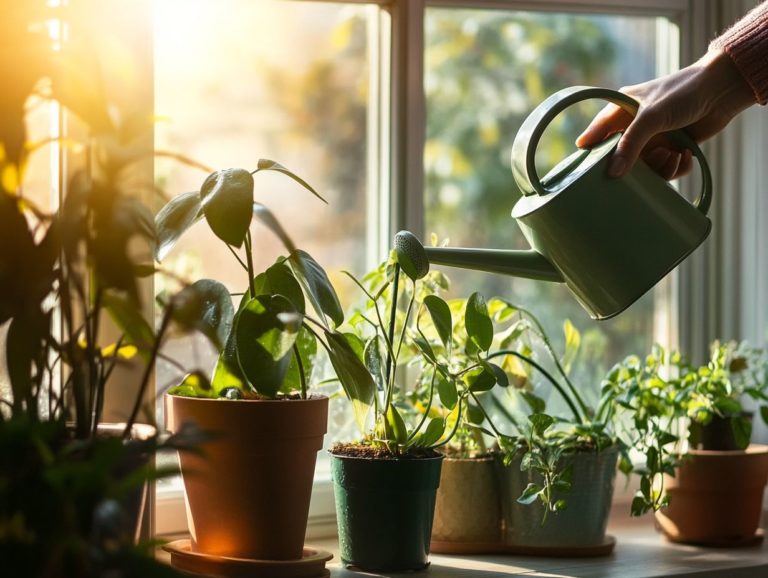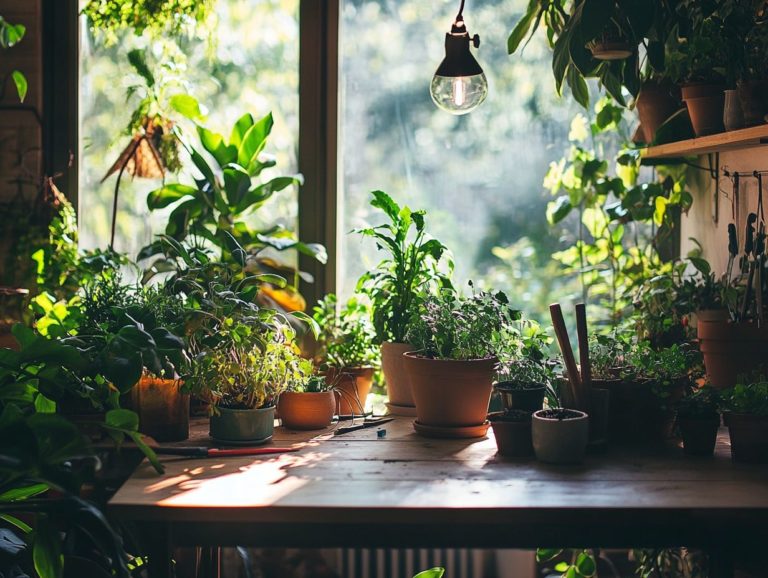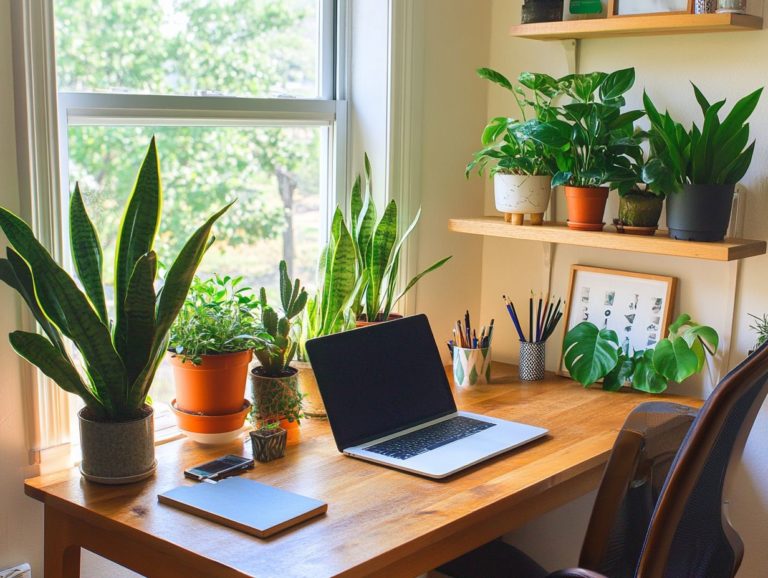How to Tell if My Indoor Plant is Overwatered?
Indoor plants can truly breathe life and vibrancy into any space. Yet, improper care particularly the all-too-common overwatering can swiftly turn your green companions into sad, droopy figures.
Recognizing the signs of overwatering is essential! It helps your indoor garden thrive. This article delves into the visual cues that reveal when your plant is drowning, outlines the typical mistakes that lead to excessive watering, and offers effective strategies to revive an overwatered plant.
It provides insightful tips on how to prevent overwatering in the future, ensuring that your indoor garden flourishes with breathtaking beauty.
Contents
- Key Takeaways:
- Signs of Overwatering in Indoor Plants
- How to Fix an Overwatered Plant
- Preventing Overwatering in Indoor Plants
- Frequently Asked Questions
- How to Tell if My Indoor Plant is Overwatered?
- Will yellow leaves indicate an overwatered plant?
- How often should I water my indoor plants to avoid overwatering?
- What can I do if I accidentally overwatered my indoor plant?
- Can overwatering kill my indoor plants?
- Are there any preventative measures I can take to avoid overwatering my indoor plants and ensure their health?
Key Takeaways:
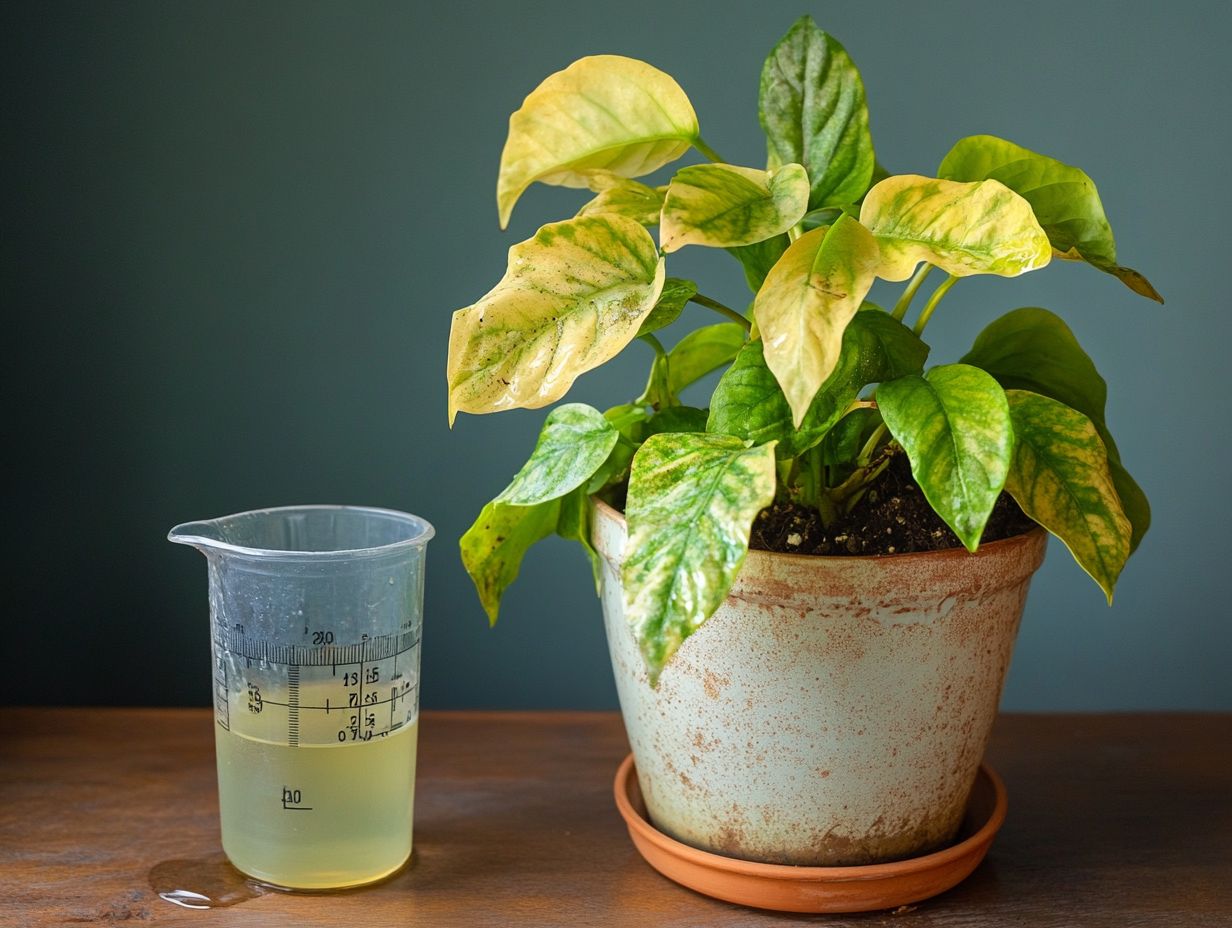
- Watch out for yellowing leaves, wilting, and mold growth as visual cues of overwatering in indoor plants.
- Avoid common mistakes like watering on a schedule and using pots without drainage holes to prevent overwatering.
- To revive an overwatered plant, remove excess water and adjust your watering habits.
Signs of Overwatering in Indoor Plants
Overwatering is a frequent challenge that can dramatically impact the health of your indoor plants. It results in issues like yellowing leaves, wilting, and even root rot.
These symptoms are often your plants way of signaling distress. They indicate that their roots are suffocating and unable to absorb nutrients your plants need due to excessive moisture.
Recognizing these signs is crucial for anyone who cherishes the allure of houseplants, whether it’s the vibrant Calathea or the resilient Sansevieria, and wishes to keep them thriving for years to come.
Visual Cues to Look Out For
Visual cues are vital indicators of overwatering in your indoor plants, with yellowing leaves being among the most common signs you should watch for. When your plants receive too much water, their leaves can turn soft and mushy, leading to wilting and the emergence of brown spots.
These often signal root rot or unwelcome fungal issues, like fungus gnats taking up residence in the soil. Drooping leaves may also indicate not just excess moisture but also poor root health.
Roots that are struggling to breathe can t effectively supply nutrients your plants need. Monitoring soil moisture is crucial: if the top inch remains soggy or excessively moist for too long, it could point to a drainage issue.
For popular indoor plants like snake plants and pothos, check for firm, vibrant leaves that maintain their shape. If they start losing their rigidity, that s a clear warning sign.
Utilizing well-draining pots and adjusting your watering schedule according to the seasons can help you prevent these visual symptoms and ensure your plants stay healthy and vibrant.
Common Mistakes that Lead to Overwatering
Many plant enthusiasts often unwittingly contribute to overwatering issues by making common mistakes. These include overlooking drainage holes in decorative pots and neglecting to monitor soil moisture levels regularly.
Understanding the nuances of proper plant care is crucial; relying solely on care cards can lead to misconceptions about how much water your plants genuinely require. Inconsistent watering schedules can leave you perplexed about your plants’ needs, making it challenging for them to thrive.
Without adequate drainage, excess water can accumulate quickly, leading to root rot and plant distress. It s easy to misinterpret care cards, causing you to believe that every orchid or fern requires the same amount of water when, in fact, their needs can vary significantly.
To sidestep these common missteps, consider investing in moisture meters tools that help gauge the water levels in the soil and establishing a watering routine based on your plants observed preferences rather than generalized labels.
This approach will help ensure that your green companions receive the attentive care they deserve, ultimately preventing the harmful effects of overwatering. If you notice these signs, act quickly to save your plants!
Your plants depend on you start monitoring them today!
How to Fix an Overwatered Plant

Fixing an overwatered plant requires a step-by-step method to restore its health. Root rot can be a serious threat, so acting quickly is crucial.
First, check the plant’s condition. Ensure the drainage holes are clear and assess the soil moisture level.
Consider repotting the plant in a drier medium if necessary. Your goal is to create an environment where the roots can breathe and absorb nutrients effectively.
Steps to Revive an Overwatered Plant
To revive an overwatered plant, start by gently removing it from its pot. Inspect the roots for any mushy or discolored areas and ensure the drainage holes are not clogged.
If you find rotting roots, trim the damaged sections using sterilized scissors. Repot the plant in fresh, well-draining soil.
Next, rethink your watering routine. Allow the top inch of soil to dry out before watering again, especially for plants like succulents that prefer less moisture.
Tropical plants need consistent moisture but benefit from good drainage. Understanding different plant needs helps guide their recovery.
Preventing Overwatering in Indoor Plants
Prevention is key when it comes to overwatering your indoor plants. Start by understanding their unique watering needs.
Using a moisture meter can help you know when to water. Choosing the right potting mix ensures proper drainage while retaining the right amount of moisture.
Proper Watering Techniques and Tips
Implementing proper watering techniques is vital for your indoor plants. Regularly check the soil moisture with a moisture meter to water at the right time.
Remember, different plants have different moisture requirements. For instance, succulents thrive in drier conditions, while tropical species love consistently moist soil.
To find the ideal watering frequency, consider factors like humidity and temperature. A moisture meter can help you determine when to water.
Check drainage holes often for water accumulation. This simple step can save your plants from root rot!
By following these practices, you’ll greatly improve your ability to nurture a thriving indoor garden. Start caring for your plants today and watch them flourish!
Choosing the Right Potting Mix and Container
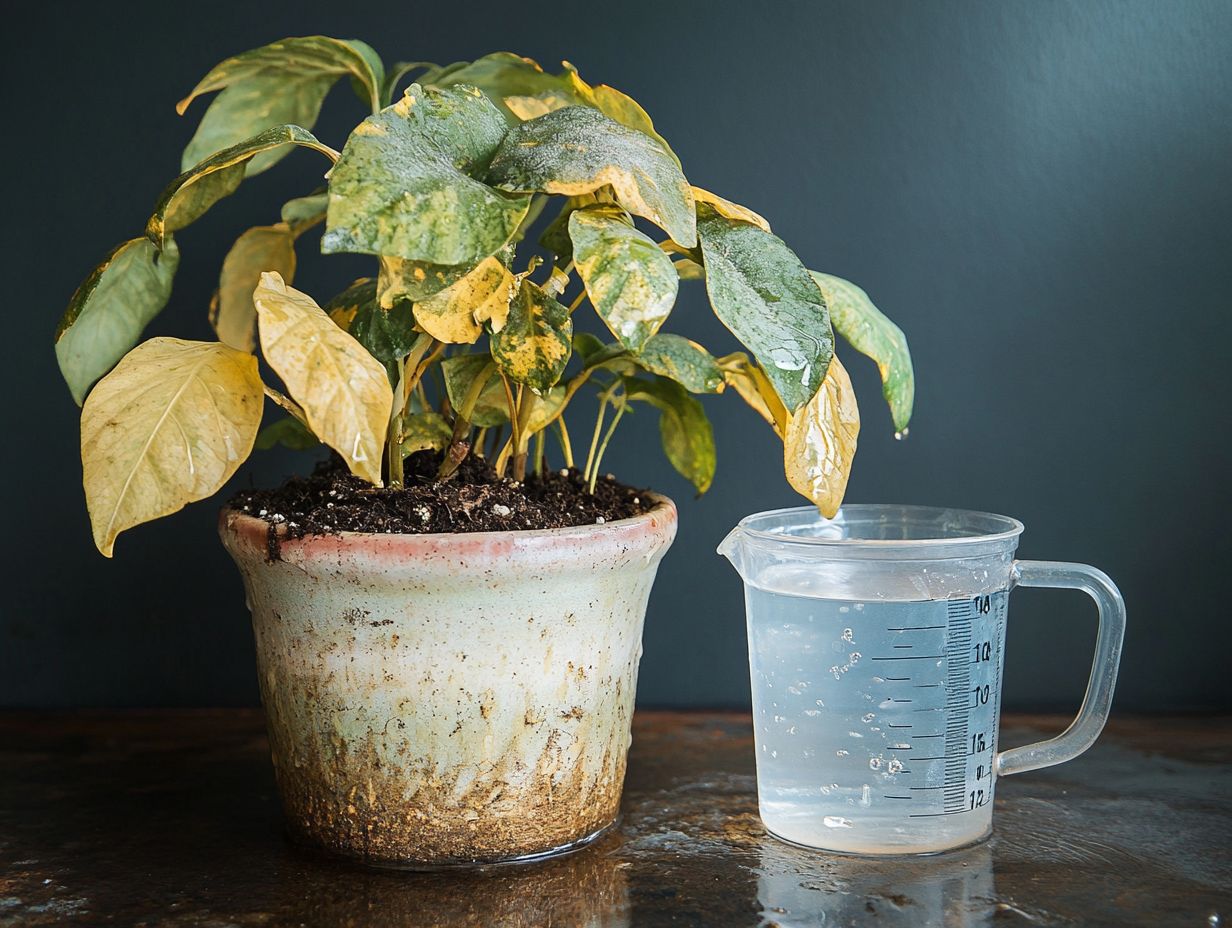
Choosing the right potting mix and container is essential for your indoor plants’ health. It directly influences drainage and moisture retention. A pot with sufficient drainage holes prevents overwatering and creates a balanced environment for healthy roots.
It’s also crucial to consider the moisture requirements of the plants you re nurturing. For instance, succulents thrive in sandy, well-draining mixes, while moisture-loving varieties, like ferns, prefer a blend that holds some water but drains efficiently.
Containers made from materials like terracotta can absorb excess moisture, helping maintain the right balance for sensitive plants. In contrast, plastic pots are lighter and more insulated, making them ideal for plants that need extra warmth or stability.
Choosing the right mix and pot is your ticket to happy, thriving plants!
Frequently Asked Questions
How to Tell if My Indoor Plant is Overwatered?
There are a few signs to look for to determine if your indoor plant is overwatered. Wilting leaves can indicate both over and underwatering. However, overwatered plants have soft, limp leaves, while underwatered ones have dry, crispy leaves.
Will yellow leaves indicate an overwatered plant?
Yes! Yellow leaves can signal overwatering in indoor plants. If the yellow leaves are mushy or falling off easily, this is a definite sign of overwatering.
How often should I water my indoor plants to avoid overwatering?
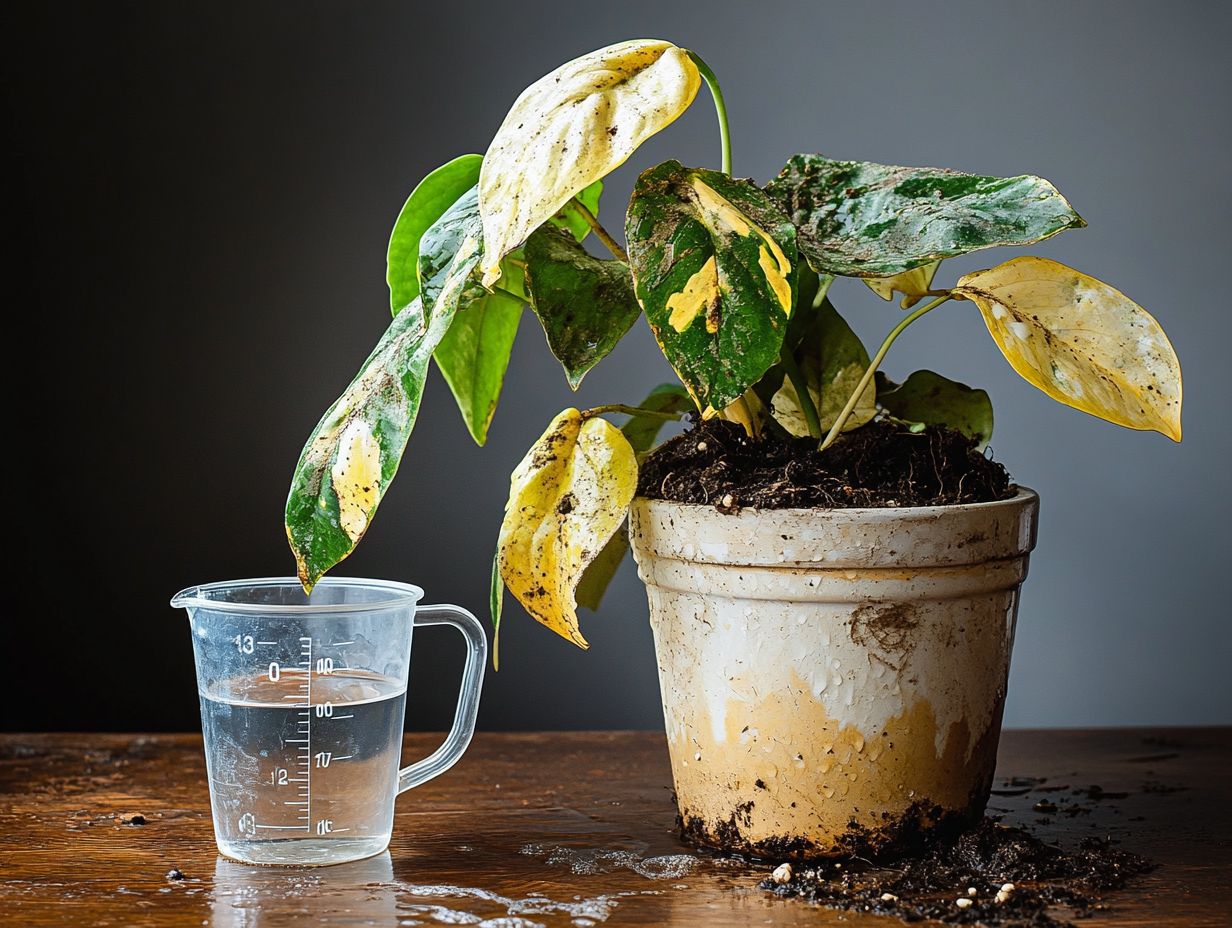
The watering frequency for indoor plants varies by type and specific needs. A good rule of thumb is to check the soil moisture level before watering. Only water when the top inch of soil is dry to help prevent overwatering.
What can I do if I accidentally overwatered my indoor plant?
If you’ve overwatered your indoor plant, the first step is to remove it from its pot and inspect the roots. If they are brown and mushy, you may need to repot the plant in fresh, well-draining soil. Let the soil dry out completely before watering again.
Can overwatering kill my indoor plants?
Yes! Overwatering can harm your plant and may eventually lead to its death. It can cause root rot and prevent the plant from receiving essential nutrients and oxygen.
Are there any preventative measures I can take to avoid overwatering my indoor plants and ensure their health?
To prevent overwatering, ensure your indoor plants are potted in well-draining soil and have proper drainage holes in their pots. Water only when the top inch of soil is dry, and adjust your watering frequency based on the plant’s specific needs.

